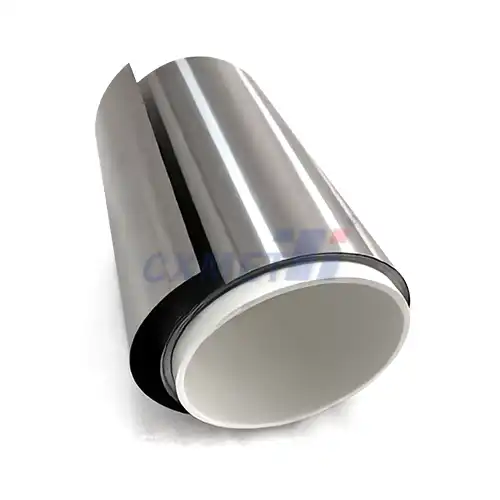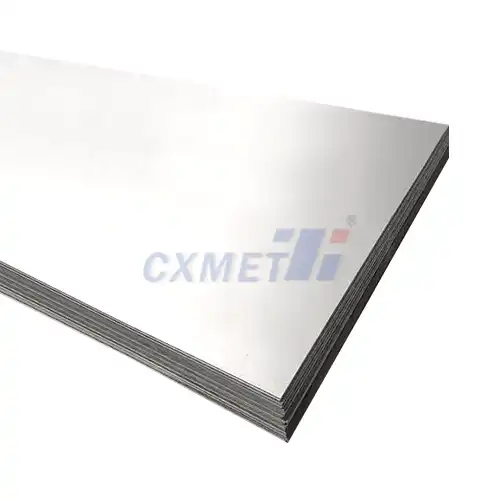- English
- French
- German
- Portuguese
- Spanish
- Russian
- Japanese
- Korean
- Arabic
- Greek
- German
- Turkish
- Italian
- Danish
- Romanian
- Indonesian
- Czech
- Afrikaans
- Swedish
- Polish
- Basque
- Catalan
- Esperanto
- Hindi
- Lao
- Albanian
- Amharic
- Armenian
- Azerbaijani
- Belarusian
- Bengali
- Bosnian
- Bulgarian
- Cebuano
- Chichewa
- Corsican
- Croatian
- Dutch
- Estonian
- Filipino
- Finnish
- Frisian
- Galician
- Georgian
- Gujarati
- Haitian
- Hausa
- Hawaiian
- Hebrew
- Hmong
- Hungarian
- Icelandic
- Igbo
- Javanese
- Kannada
- Kazakh
- Khmer
- Kurdish
- Kyrgyz
- Latin
- Latvian
- Lithuanian
- Luxembou..
- Macedonian
- Malagasy
- Malay
- Malayalam
- Maltese
- Maori
- Marathi
- Mongolian
- Burmese
- Nepali
- Norwegian
- Pashto
- Persian
- Punjabi
- Serbian
- Sesotho
- Sinhala
- Slovak
- Slovenian
- Somali
- Samoan
- Scots Gaelic
- Shona
- Sindhi
- Sundanese
- Swahili
- Tajik
- Tamil
- Telugu
- Thai
- Ukrainian
- Urdu
- Uzbek
- Vietnamese
- Welsh
- Xhosa
- Yiddish
- Yoruba
- Zulu
How is GR2 Titanium Seamless Tube manufactured?
2025-05-16 16:52:33
GR2 Titanium Seamless Tube is a high-quality, corrosion-resistant material widely used in various industries due to its exceptional properties. The manufacturing process of GR2 Titanium Seamless Tube involves several sophisticated steps to ensure its superior quality and performance. This article will explore the production methods, quality control measures, and applications of this versatile material.
|
|
|
What are the key steps in the GR2 Titanium Seamless Tube production process?
The production of GR2 Titanium Seamless Tube involves a series of carefully controlled steps to achieve the desired properties and quality. The process begins with the selection of high-purity titanium raw materials, typically in the form of ingots or billets. These materials are carefully inspected to ensure they meet the required specifications for chemical composition and purity.
The first major step in the manufacturing process is hot working. The titanium ingot or billet is heated to temperatures above its recrystallization point, typically around 800-1000°C. This heating process makes the material more malleable and easier to shape. The heated titanium is then passed through a series of rollers or extruders to form the initial tubular shape. This hot working process helps to refine the grain structure of the material, improving its overall strength and ductility.
After the initial shaping, the tube undergoes a series of cold working processes. These may include cold pilgering, cold drawing, or cold rolling. Cold working is performed at temperatures below the material's recrystallization point and helps to further refine the tube's dimensions and mechanical properties. During this stage, the tube's diameter is gradually reduced, and its wall thickness is precisely controlled.
Throughout the cold working process, the material may undergo intermediate annealing treatments. Annealing involves heating the tube to specific temperatures and then cooling it in a controlled manner. This process helps to relieve internal stresses that build up during cold working and restores the material's ductility, making it easier to continue the forming process.
Once the desired dimensions are achieved, the tube undergoes a final heat treatment process. This heat treatment, often called solution annealing, involves heating the tube to high temperatures (typically around 700-800°C) and then rapidly cooling it. This process helps to optimize the material's microstructure, enhancing its mechanical properties and corrosion resistance.
The final stages of production involve surface finishing and quality control. The tubes are carefully cleaned to remove any surface contaminants or oxides. They may also undergo additional surface treatments such as pickling or passivation to further enhance their corrosion resistance. Finally, each tube is subjected to rigorous quality control measures, including dimensional checks, non-destructive testing (such as ultrasonic or eddy current testing), and mechanical property tests to ensure it meets the required specifications.
What are the quality control measures used in GR2 Titanium Seamless Tube manufacturing?
Quality control is a critical aspect of GR2 Titanium Seamless Tube manufacturing, ensuring that each product meets the stringent standards required for its various applications. The quality control process begins with the raw materials and continues throughout the entire manufacturing process, culminating in final product testing and certification.
One of the first quality control measures is the careful selection and testing of raw materials. The titanium ingots or billets used for tube production are subjected to chemical analysis to verify their composition and purity. This step is crucial as even small variations in the material's chemistry can significantly affect the final product's properties.
During the hot working and cold working stages, process parameters such as temperature, pressure, and deformation rates are closely monitored and controlled. This ensures that the material's microstructure is developing as intended and that the desired mechanical properties are being achieved. In-process inspections may be carried out to check for any defects or inconsistencies in the tube's dimensions or surface quality.
Heat treatment processes are also carefully controlled and monitored. The temperature and duration of annealing and solution treatment processes are precisely regulated to ensure that the desired microstructural changes occur uniformly throughout the tube. Cooling rates are also controlled to prevent the formation of undesirable phases or structures that could compromise the material's properties.
Once the manufacturing process is complete, each tube undergoes a series of non-destructive tests. These may include:
- Ultrasonic testing: This technique uses high-frequency sound waves to detect internal defects such as cracks, inclusions, or voids within the tube wall.
- Eddy current testing: This method can detect surface and near-surface defects by inducing electrical currents in the tube and analyzing the resulting magnetic fields.
- Hydrostatic testing: Tubes are pressurized with water to verify their structural integrity and check for any leaks.
- Dimensional checks: Precise measurements are taken to ensure that the tube's diameter, wall thickness, and length meet the specified tolerances.
In addition to these non-destructive tests, samples from each production batch may undergo destructive testing to verify mechanical properties such as tensile strength, yield strength, and elongation. These tests ensure that the tubes meet the required performance standards for their intended applications.
Surface quality is another critical aspect of quality control. The tubes are visually inspected for any surface defects, and additional tests may be performed to verify the effectiveness of surface treatments such as pickling or passivation. The surface roughness may also be measured to ensure it meets the specified requirements.
Finally, each batch of GR2 Titanium Seamless Tubes is accompanied by comprehensive documentation, including material certificates that detail the chemical composition, mechanical properties, and test results. This documentation provides traceability and assurance to customers that the product meets all relevant standards and specifications.
|
|
|
What are the main applications of GR2 Titanium Seamless Tube in various industries?
GR2 Titanium Seamless Tube finds extensive use across a wide range of industries due to its exceptional combination of properties, including high strength-to-weight ratio, excellent corrosion resistance, and biocompatibility. These characteristics make it an ideal material for numerous applications where reliability, durability, and performance are crucial.
In the aerospace industry, GR2 Titanium Seamless Tubes are widely used in aircraft hydraulic and pneumatic systems. The material's high strength and low weight contribute to fuel efficiency and overall aircraft performance. Titanium tubes are also used in engine components, where their ability to withstand high temperatures and resist corrosion is particularly valuable.
The chemical processing industry relies heavily on GR2 Titanium Seamless Tubes for handling corrosive substances. These tubes are used in heat exchangers, condensers, and piping systems where resistance to aggressive chemicals is essential. The material's excellent corrosion resistance helps to extend equipment life and reduce maintenance costs in these challenging environments.
In the oil and gas sector, GR2 Titanium Seamless Tubes are employed in offshore drilling equipment and subsea applications. The tubes' resistance to saltwater corrosion and their high strength make them ideal for use in risers, flow lines, and other critical components exposed to harsh marine environments.
The medical industry is another significant user of GR2 Titanium Seamless Tubes. The material's biocompatibility makes it suitable for various medical implants and devices. Titanium tubes are used in orthopedic implants, dental implants, and surgical instruments. The material's ability to integrate with human bone tissue and its resistance to bodily fluids contribute to its popularity in medical applications.
In the power generation industry, GR2 Titanium Seamless Tubes are used in heat exchangers and condensers, particularly in applications involving seawater cooling. The tubes' resistance to erosion and corrosion in saltwater environments makes them an excellent choice for these applications, helping to improve the efficiency and longevity of power plant equipment.
The desalination industry also benefits from the properties of GR2 Titanium Seamless Tubes. These tubes are used in reverse osmosis systems and other desalination equipment where resistance to saltwater corrosion is crucial. The use of titanium tubes helps to extend the life of desalination plants and improve their overall efficiency.
In the automotive industry, GR2 Titanium Seamless Tubes are used in high-performance vehicles, particularly in exhaust systems and suspension components. The material's high strength-to-weight ratio and heat resistance make it ideal for these applications, contributing to improved vehicle performance and fuel efficiency.
The food and beverage industry utilizes GR2 Titanium Seamless Tubes in processing equipment, particularly in applications where corrosion resistance and ease of cleaning are important. The material's resistance to various food acids and its ability to maintain a sanitary surface make it suitable for use in food processing and packaging equipment.
In conclusion, the versatility and superior properties of GR2 Titanium Seamless Tubes make them an invaluable material across numerous industries. Their unique combination of strength, corrosion resistance, and biocompatibility continues to drive innovation and improve performance in a wide range of applications, from aerospace to medicine and beyond.
At SHAANXI CXMET TECHNOLOGY CO., LTD, we take pride in our extensive product range, which caters to diverse customer needs. Our company is equipped with outstanding production and processing capabilities, ensuring the high quality and precision of our products. We are committed to innovation and continuously strive to develop new products, keeping us at the forefront of our industry. With leading technological development capabilities, we are able to adapt and evolve in a rapidly changing market. Furthermore, we offer customized solutions to meet the specific requirements of our clients. If you are interested in our products or wish to learn more about the intricate details of our offerings, please do not hesitate to contact us at sales@cxmet.com. Our team is always ready to assist you.
|
|
|
References
- ASTM International. (2021). ASTM B338 - Standard Specification for Seamless and Welded Titanium and Titanium Alloy Tubes for Condensers and Heat Exchangers.
- Lutjering, G., & Williams, J. C. (2007). Titanium (2nd ed.). Springer-Verlag Berlin Heidelberg.
- Peters, M., Kumpfert, J., Ward, C. H., & Leyens, C. (2003). Titanium alloys for aerospace applications. Advanced Engineering Materials, 5(6), 419-427.
- Boyer, R. R. (1996). An overview on the use of titanium in the aerospace industry. Materials Science and Engineering: A, 213(1-2), 103-114.
- Rack, H. J., & Qazi, J. I. (2006). Titanium alloys for biomedical applications. Materials Science and Engineering: C, 26(8), 1269-1277.
- Schutz, R. W., & Watkins, H. B. (1998). Recent developments in titanium alloy application in the energy industry. Materials Science and Engineering: A, 243(1-2), 305-315.
- Donachie, M. J. (2000). Titanium: A Technical Guide (2nd ed.). ASM International.
- Froes, F. H. (Ed.). (2015). Titanium: Physical Metallurgy, Processing, and Applications. ASM International.
- Veiga, C., Davim, J. P., & Loureiro, A. J. R. (2012). Properties and applications of titanium alloys: A brief review. Reviews on Advanced Materials Science, 32(2), 133-148.
- Polmear, I., StJohn, D., Nie, J. F., & Qian, M. (2017). Light Alloys: Metallurgy of the Light Metals (5th ed.). Butterworth-Heinemann.









